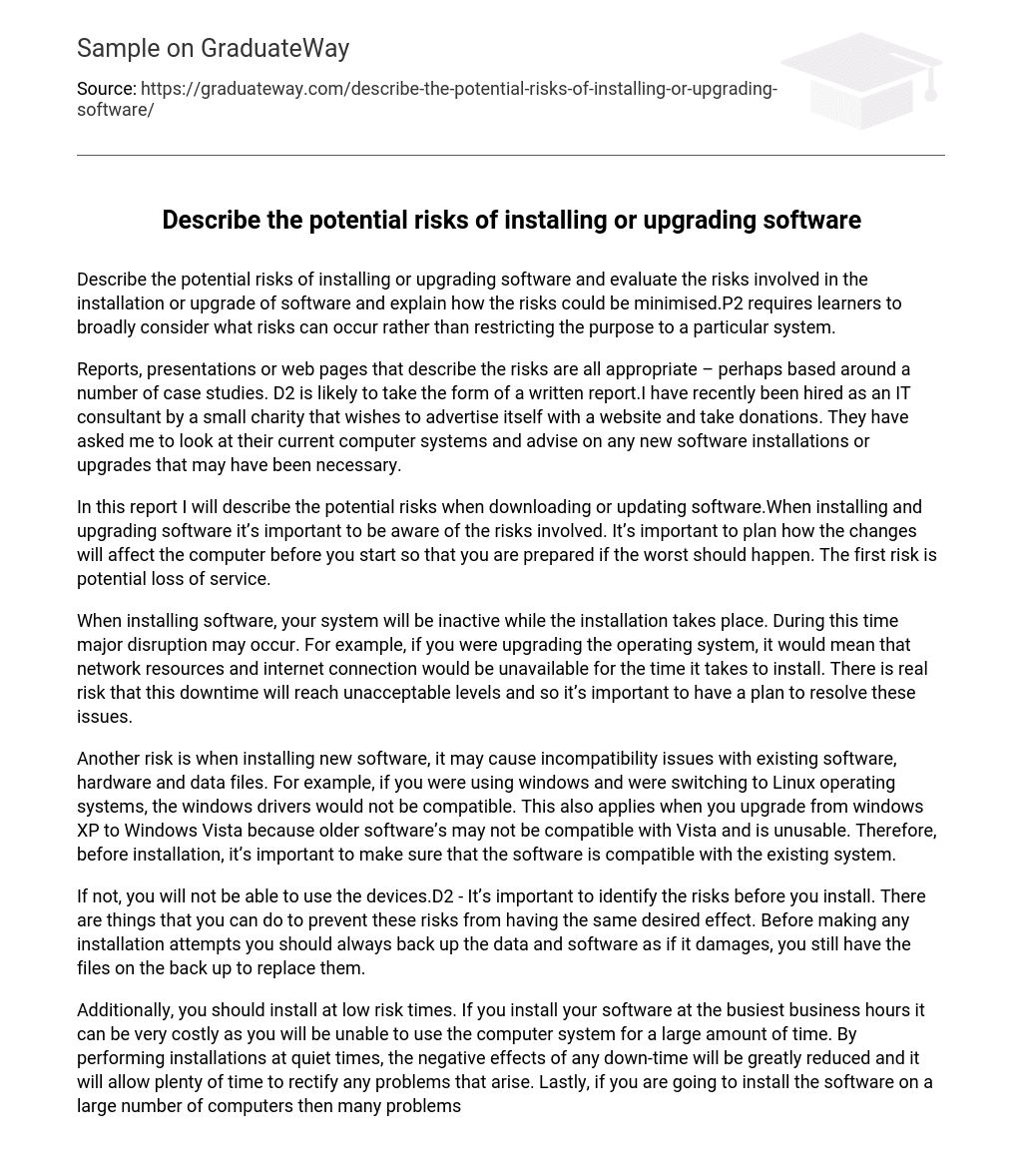Describe the potential risks of installing or upgrading software and evaluate the risks involved in the installation or upgrade of software and explain how the risks could be minimised.P2 requires learners to broadly consider what risks can occur rather than restricting the purpose to a particular system.
Reports, presentations or web pages that describe the risks are all appropriate – perhaps based around a number of case studies. D2 is likely to take the form of a written report.I have recently been hired as an IT consultant by a small charity that wishes to advertise itself with a website and take donations. They have asked me to look at their current computer systems and advise on any new software installations or upgrades that may have been necessary.
In this report I will describe the potential risks when downloading or updating software.When installing and upgrading software it’s important to be aware of the risks involved. It’s important to plan how the changes will affect the computer before you start so that you are prepared if the worst should happen. The first risk is potential loss of service.
When installing software, your system will be inactive while the installation takes place. During this time major disruption may occur. For example, if you were upgrading the operating system, it would mean that network resources and internet connection would be unavailable for the time it takes to install. There is real risk that this downtime will reach unacceptable levels and so it’s important to have a plan to resolve these issues.
Another risk is when installing new software, it may cause incompatibility issues with existing software, hardware and data files. For example, if you were using windows and were switching to Linux operating systems, the windows drivers would not be compatible. This also applies when you upgrade from windows XP to Windows Vista because older software’s may not be compatible with Vista and is unusable. Therefore, before installation, it’s important to make sure that the software is compatible with the existing system.
If not, you will not be able to use the devices.D2 – It’s important to identify the risks before you install. There are things that you can do to prevent these risks from having the same desired effect. Before making any installation attempts you should always back up the data and software as if it damages, you still have the files on the back up to replace them.
Additionally, you should install at low risk times. If you install your software at the busiest business hours it can be very costly as you will be unable to use the computer system for a large amount of time. By performing installations at quiet times, the negative effects of any down-time will be greatly reduced and it will allow plenty of time to rectify any problems that arise. Lastly, if you are going to install the software on a large number of computers then many problems arise. Therefore, it’s important to install them on a smaller scale.





